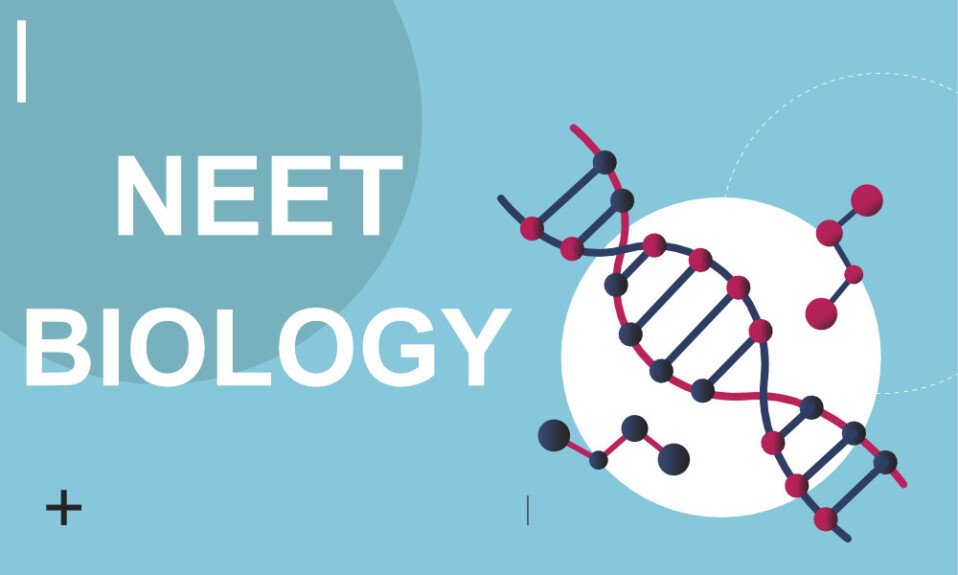1. Free fatty acids are transported in the blood
(A) Combined with albumin
(B) Combined with fatty acid binding protein
(C) Combined with β -lipoprotein
(D) In unbound free salts
Answer:(A) Combined with albumin
2. Long chain fatty acids are first activated to acetyl-CoA in
(A) Cytosol
(B) Microsomes
(C) Nucleus
(D) Mitochondria
Answer:(A) Cytosol
3. The enzyme acyl-CoA synthase catalyses the conversion of a fatty acid of an active fatty acid in the presence of
(A) AMP
(B) ADP
(C) ATP
(D) GTP
Answer:(C) ATP
4. Carnitine is synthesized from
(A) Lysine and methionine
(B) Glycine and arginine
(C) Aspartate and glutamate
(D) Proline and hydroxyproline
Answer:(A) Lysine and methionine
5. The enzymes of β-oxidation are found in
(A) Mitochondria
(B) Cytosol
(C) Golgi apparatus
(D) Nucleus
Answer:(A) Mitochondria
6. Long chain fatty acids penetrate the inner mitochondrial membrane
(A) Freely
(B) As acyl-CoA derivative
(C) As carnitine derivative
(D) Requiring Na dependent carrier
Answer:(C) As carnitine derivative
7. An important feature of Zellweger’s syndrome is
(A) Hypoglycemia
(B) Accumulation of phytanic acid in tissues
(C) Skin eruptions
(D) Accumulation of C26-C38 polyenoic acid in brain tissues
Answer:(D) Accumulation of C26-C38 polyenoic acid in brain tissues
8. An important finding of Fabry’s disease is
(A) Skin rash
(B) Exophthalmos
(C) Hemolytic anemia
(D) Mental retardation
Answer:(A) Skin rash
9. Gaucher’s disease is due to deficiency of the enzyme:
(A) Sphingomyelinase
(B) Glucocerebrosidase
(C) Galactocerebrosidase
(D) β-Galactosidase
Answer:(B) Glucocerebrosidase
10. Character list of finding in Gaucher ’s disease is
(A) Night blindness
(B) Renal failure
(C) Hepatosplenomegaly
(D) Deafness
Answer:(C) Hepatosplenomegaly
11. An important finding in Niemann-Pick disease is
(A) Leukopenia
(B) Cardiac enlargement
(C) Corneal opacity
(D) Hepatosplenomegaly
Answer:(D) Hepatosplenomegaly
12. Fucosidosis is characterized by
(A) Muscle spasticity
(B) Liver enlargement
(C) Skin rash
(D) Kidney failure
Answer:(A) Muscle spasticity
13. Metachromatic leukodystrophy is due to deficiency of enzyme:
(A) α-Fucosidase
(B) Arylsulfatase A
(C) Ceramidase
(D) Hexosaminidase A
Answer:(B) Arylsulfatase A
14. A significant feature of Tangier disease is
(A) Impairment of chylomicron formation
(B) Hypertriacylglycerolemia
(C) Absence of Apo-C-II
(D) Absence of Apo-C-I
Answer:(C) Absence of Apo-C-II
15. A significant feature of Broad Beta disease is
(A) Hypocholesterolemia
(B) Hypertriacylglycerolemia
(C) Absence of Apo-D
(D) Abnormality of Apo-E
Answer:(D) Abnormality of Apo-E
16. Neonatal tyrosinemia improves on administration of
(A) Thiamin
(B) Riboflavin
(C) Pyridoxine
(D) Ascorbic acid
Answer:(A) Thiamin
17. Absence of phenylalanine hydroxylase causes
(A) Neonatal tyrosinemia
(B) Phenylketonuria
(C) Primary hyperoxaluria
(D) Albinism
Answer:(D) Albinism
18. Richner-Hanhart syndrome is due to a defect in
(A) Tyrosinase
(B) Phenylalanine hydroxylase
(C) Hepatic tyrosine transaminase
(D) Fumarylacetoacetate hydrolase
Answer:(B) Phenylalanine hydroxylase
19. Plasma tyrosine level in Richner-Hanhart syndrome is
(A) 1–2 mg/dL
(B) 2–3 mg/dL
(C) 4–5 mg/dL
(D) 8–10 mg/dL
Answer:(C) 4–5 mg/dL
20. Amount of phenylacetic acid excreted in the urine in phenylketonuria is
(A) 100–200 mg/dL
(B) 200–280 mg/dL
(C) 290–550 mg/dL
(D) 600–750 mg/dL
Answer:(C) 290–550 mg/dL
21. Tyrosinosis is due to defect in the enzyme:
(A) Fumarylacetoacetate hydrolase
(B) p-Hydroxyphenylpyruvate hydroxylase
(C) Tyrosine transaminase
(D) Tyrosine hydroxylase
Answer:(A) Fumarylacetoacetate hydrolase
22. An important finding in Histidinemia is
(A) Impairment of conversion of α-Glutamate to α-ketoglutarate
(B) Speech defect
(C) Decreased urinary histidine level
(D) Patients can not be treated by diet
Answer:(B) Speech defect
23. An important finding in glycinuria is
(A) Excess excretion of oxalate in the urine
(B) Deficiency of enzyme glycinate
(C) Significantly increased serum glycine level
(D) Defect in renal tubular reabsorption of glycine
Answer:(D) Defect in renal tubular reabsorption of glycine
24. Increased urinary indole acetic acid is diagnostic of
(A) Maple syrup urine disease
(B) Hartnup disease
(C) Homocystinuria
(D) Phenylketonuria
Answer:(B) Hartnup disease
25. In glycinuria daily urinary excretion of glycine ranges from
(A) 100–200 mg
(B) 300–500 mg
(C) 600–1000 mg
(D) 1100–1400 mg
Answer:(C) 600–1000 mg
26. An inborn error, maple syrup urine disease is due to deficiency of the enzyme:
(A) Isovaleryl-CoA dehydrogenase
(B) Phenylalanine hydroxylase
(C) Adenosyl transferase
(D) α-Ketoacid decarboxylase
Answer:(D) α-Ketoacid decarboxylase
27. Maple syrup urine disease becomes evident in extra uterine life by the end of
(A) First week
(B) Second week
(C) Third week
(D) Fourth week
Answer:(A) First week
28. Alkaptonuria occurs due to deficiency of the enzyme:
(A) Maleylacetoacetate isomerase
(B) Homogentisate oxidase
(C) p-Hydroxyphenylpyruvate hydroxylase
(D) Fumarylacetoacetate hydrolase
Answer:(B) Homogentisate oxidase
29. An important feature of maple syrup urine disease is
(A) Patient can not be treated by dietary regulation
(B) Without treatment death, of patient may occur by the end of second year of life
(C) Blood levels of leucine, isoleucine and serine are increased
(D) Excessive brain damage
Answer:(D) Excessive brain damage
30. Ochronosis is an important finding of
(A) Tyrosinemia
(B) Tyrosinosis
(C) Alkaptonuria
(D) Richner Hanhart syndrome
Answer:(C) Alkaptonuria
31. Phrynoderma is a deficiency of
(A) Essential fatty acids
(B) Proteins
(C) Amino acids
(D) None of these
Answer:(A) Essential fatty acids
32. The percentage of linoleic acid in safflower oil is
(A) 73
(B) 57
(C) 40
(D) 15
Answer:(A) 73
33. The percentage of polyunsaturated fatty acids in soybean oil is
(A) 62
(B) 10
(C) 3
(D) 2
Answer:(A) 62
34. The percentage of polyunsaturated fatty acids in butter is
(A) 60
(B) 37
(C) 25
(D) 3
Answer:(D) 3
35. Dietary fibre denotes
(A) Undigested proteins
(B) Plant cell components that cannot be digested by own enzymes
(C) All plant cell wall components
(D) All non digestible water insoluble polysaccharide
Answer:(B) Plant cell components that cannot be digested by own enzymes
36. A high fibre diet is associated with reduced incidence of
(A) Cardiovascular disease
(B) C.N.S. disease
(C) Liver disease
(D) Skin disease
Answer:(A) Cardiovascular disease
37. Dietary fibres are rich in
(A) Cellulose
(B) Glycogen
(C) Starch
(D) Proteoglycans
Answer:(A) Cellulose
38. Minimum dietary fibre is found in
(A) Dried apricot
(B) Peas
(C) Bran
(D) Cornflakes
Answer:(B) Peas
39. A bland diet is recommended in
(A) Peptic ulcer
(B) Atherosclerosis
(C) Diabetes
(D) Liver disease
Answer:(A) Peptic ulcer
40. A dietary deficiency in both the quantity and the quality of protein results in
(A) Kwashiorkor
(B) Marasmus
(C) Xerophthalmia
(D) Liver diseases
Answer:(A) Kwashiorkor
41. The deficiency of both energy and protein causes
(A) Marasmus
(B) Kwashiorkor
(C) Diabetes
(D) Beri-beri
Answer:(A) Marasmus
42. Kwashiorkor is characterized by
(A) Night blindness
(B) Edema
(C) Easy fracturability
(D) Xerophthalmia
Answer: (B) Edema
43. A characteristic feature of Kwashiorkor is
(A) Fatty liver
(B) Emaciation
(C) Low insulin level
(D) Occurrence in less than 1 year infant
Answer: (A) Fatty liver
44. A characteristic feature of marasmus is
(A) Severe hypoalbuminemia
(B) Normal epinephrine level
(C) Mild muscle wasting
(D) Low insulin and high cortisol level
Answer: (D) Low insulin and high cortisol level
45. Obesity generally reflects excess intake of energy and is often associated with the development of
(A) Nervousness
(B) Non-insulin dependent diabetes mellitus
(C) Hepatitis
(D) Colon cancer
Answer: (B) Non-insulin dependent diabetes mellitus
46. Atherosclerosis and coronary heart diseases are associated with the diet:
(A) High in total fat and saturated fat
(B) Low in protein
(C) High in protein
(D) High in carbohydrate
Answer:(A) High in total fat and saturated fat
47. Cerebrovascular disease and hypertension is associated with
(A) High calcium intake
(B) High salt intake
(C) Low calcium intake
(D) Low salt intake
Answer:(B) High salt intake
48. The normal range of total serum bilirubin is
(A) 0.2–1.2 mg/100 ml
(B) 1.5–1.8 mg/100 ml
(C) 2.0–4.0 mg/100 ml
(D) Above 7.0 mg/100 ml
Answer:(A) 0.2–1.2 mg/100 ml
49. The normal range of direct reacting (conjugated) serum bilirubin is
(A) 0–0.1 mg/100 ml
(B) 0.1–0.4 mg/100 ml
(C) 0.4–06 mg/100 ml
(D) 0.5–1 mg/100 ml
Answer:(B) 0.1–0.4 mg/100 ml
50. The normal range of indirect (unconjugated) bilirubin in serum is
(A) 0–0.1 mg/100 ml
(B) 0.1–0.2 mg/100 ml
(C) 0.2–0.7 mg/100 ml
(D) 0.8–1.0 mg/100 ml
Answer:(C) 0.2–0.7 mg/100 ml



